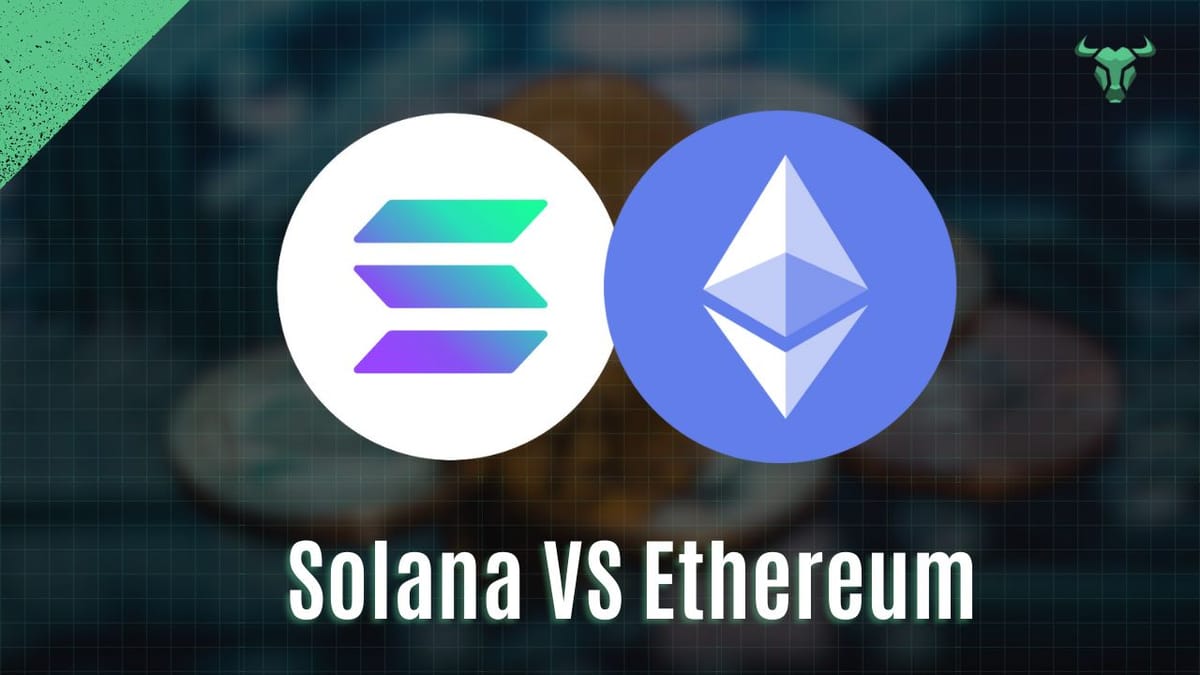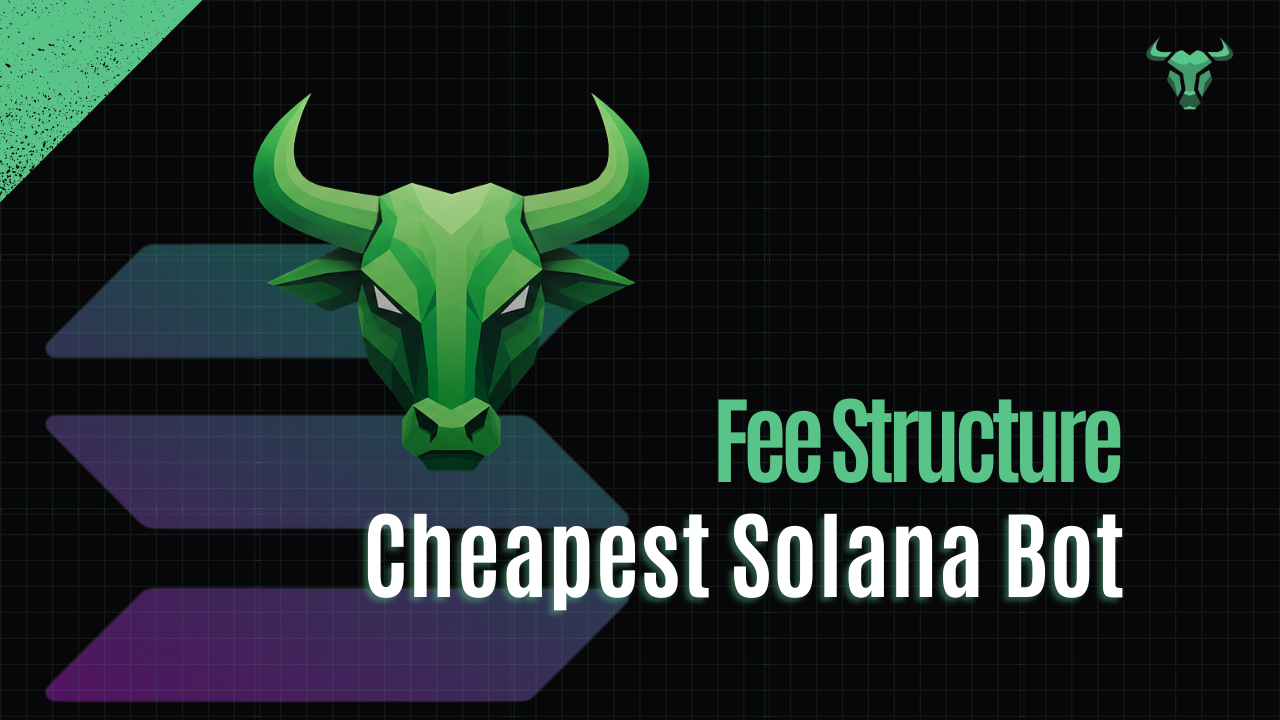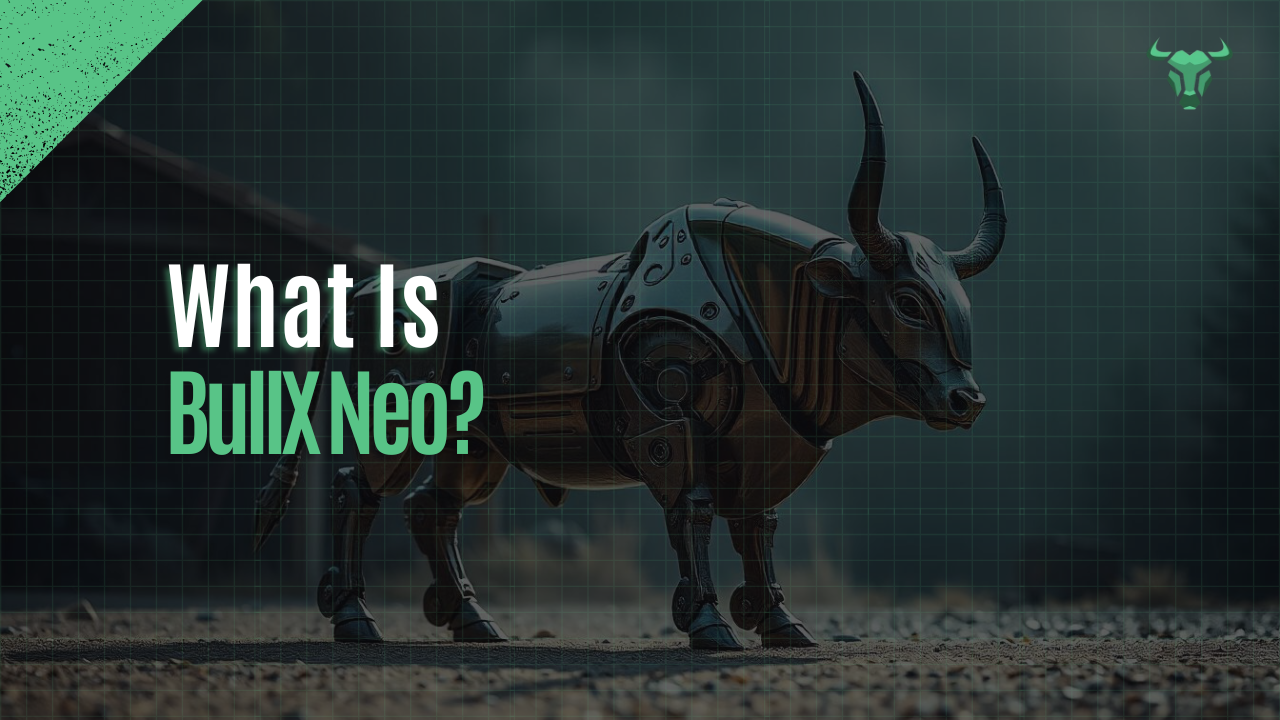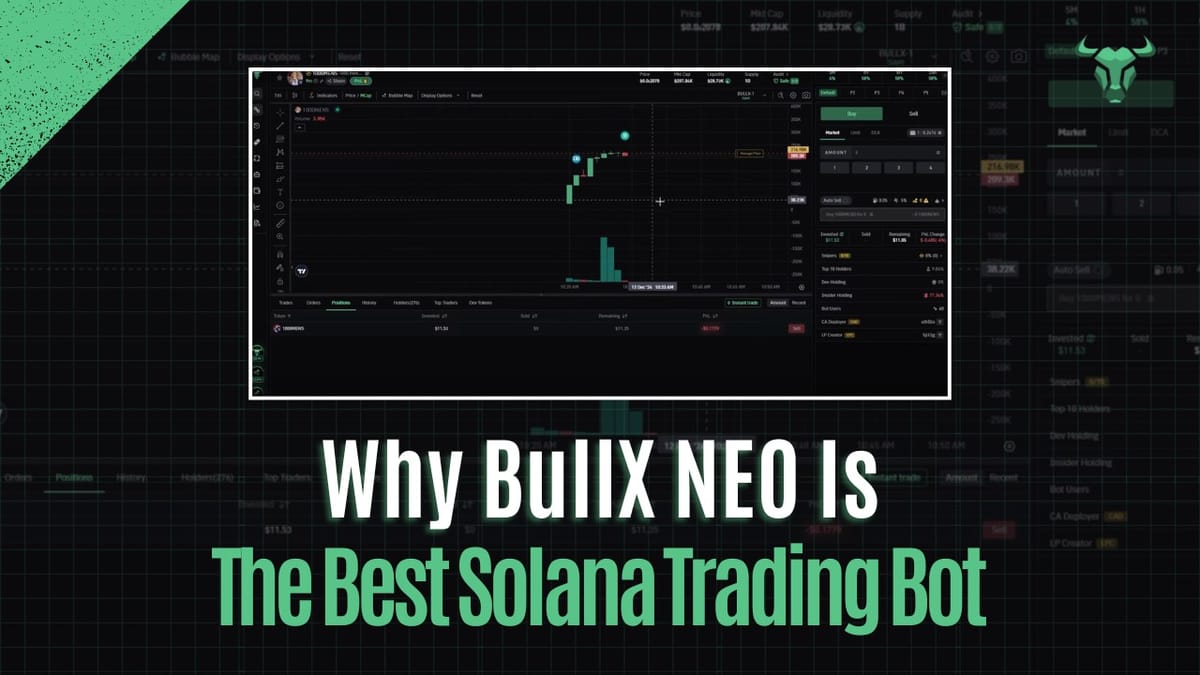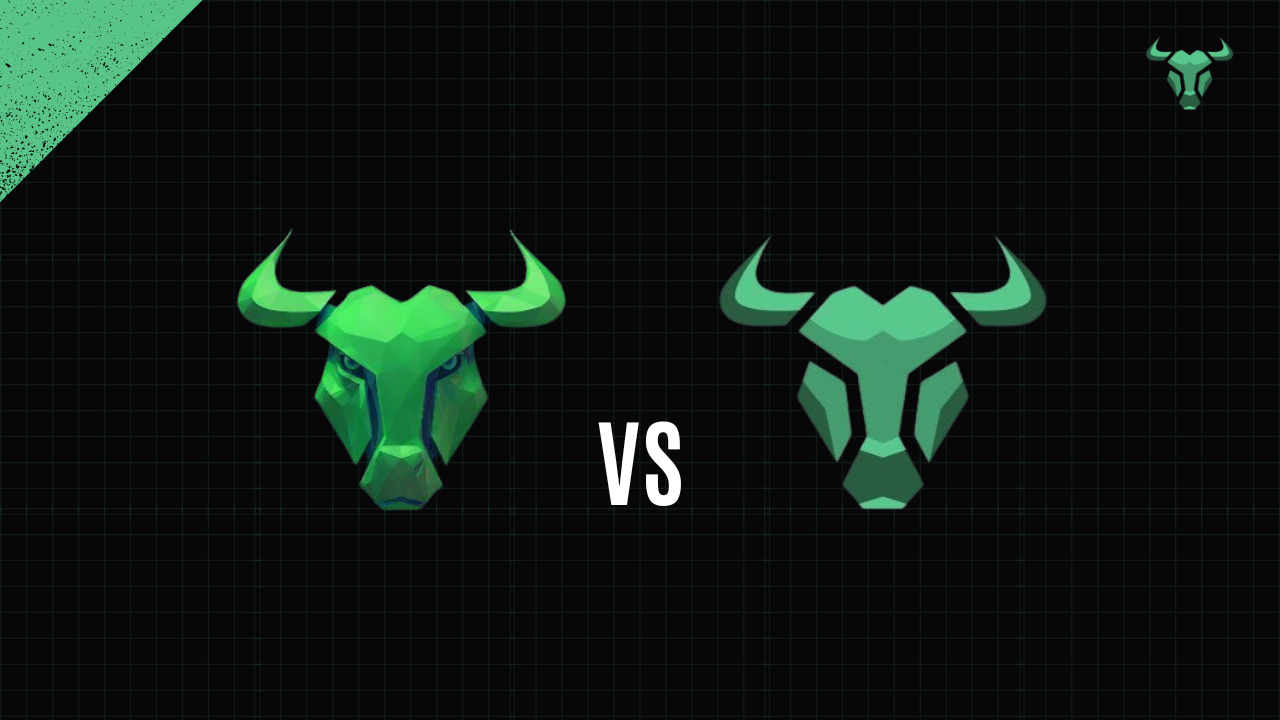Solana vs Ethereum: Transaction Speeds and Trading Fees Compared
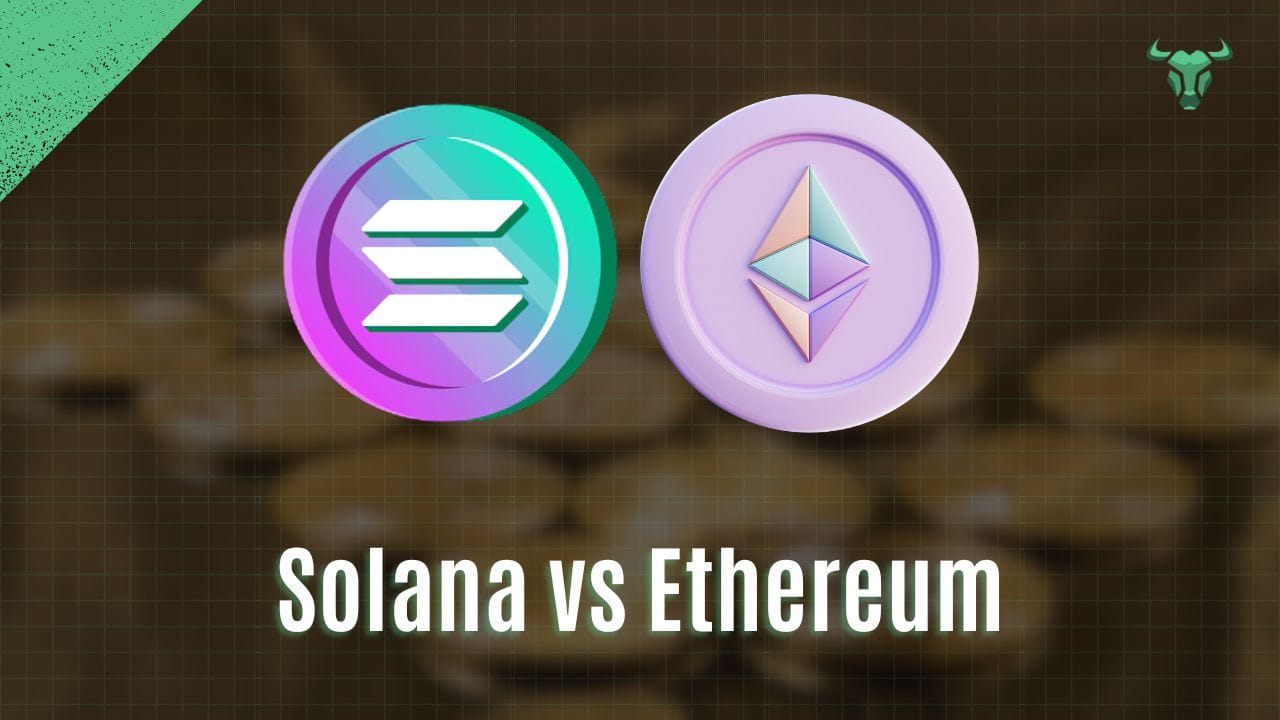
Thinking about crypto trading? You've probably heard a lot about Solana and Ethereum. They're both big players, but they work pretty differently, especially when it comes to how fast you can trade and how much it costs. We're going to break down the solana vs ethereum debate, looking at transaction speeds, fees, and what that means for your trading. We'll even check out how a tool like BullX NEO uses Solana to make trading faster and easier. Let's get into it.
Key Takeaways
- Solana generally offers much faster transaction speeds and lower fees compared to Ethereum, which can be a big deal for active traders.
- Ethereum's transaction fees, often called gas fees, can get quite high, especially during busy network periods, impacting trading costs.
- Trading bots like BullX NEO leverage Solana's speed and low costs for efficient trading, often integrating with platforms like Telegram for accessibility.
- User experience is a factor, with some tools aiming for mobile-first, beginner-friendly interfaces on Solana, while still offering advanced features.
- When comparing solana vs ethereum for trading, consider the infrastructure, potential for multi-chain use, and automated trading capabilities.
Solana Vs Ethereum: Transaction Throughput
When you're trading crypto, especially with tools like BullX NEO, how fast transactions go through and how much they cost really matters. You want to get your trades in quickly, right? That's where looking at transaction speeds, or throughput, comes into play.

Understanding Blockchain Transaction Speeds
Think of blockchain transaction speed like the number of cars that can pass through a toll booth in a minute. More cars per minute means a faster, less congested road. In crypto, this is measured in transactions per second (TPS). Higher TPS means the network can handle more activity at once. This is super important for active traders who can't afford delays.
Solana's High-Speed Architecture
Solana is built differently to handle a lot of transactions. It uses a unique system called Proof of History (PoH) combined with Proof of Stake (PoS). This setup allows it to process transactions much faster than many other blockchains. In fact, Solana has shown it can handle speeds around 1,000 TPS, which is a big deal for trading bots that need to execute quickly. For example, while NASDAQ handles about 2,000 trades per second, Solana is positioned as a high-performance layer-1 solution that can keep up with demanding market activity. This speed is a key reason why platforms like BullX NEO are built on Solana.
Ethereum's Transaction Capacity
Ethereum, on the other hand, has historically faced challenges with speed and cost, especially during busy periods. While it's a very secure and widely used network, its TPS is much lower than Solana's, often in the range of 15-30 TPS. This can lead to network congestion and higher fees. Although Ethereum is working on upgrades, like Layer 2 solutions, to improve its capacity, it still lags behind Solana in raw transaction speed. This difference is why you might see faster execution on Solana-based trading tools compared to those on Ethereum.
Here's a quick look at the numbers:
| Network | Typical TPS |
|---|---|
| Solana | ~1,000+ |
| Ethereum | ~15-30 |
The difference in transaction throughput between Solana and Ethereum is significant. For active traders, this means Solana can offer a much smoother and quicker experience, especially when using tools that rely on rapid transaction execution.
Comparing Trading Fees: Solana Vs Ethereum
When you're trading crypto, especially with tools like BullX NEO, the fees can really add up. It's a big part of what makes one blockchain feel better to use than another. Let's break down how Solana and Ethereum stack up when it comes to transaction costs.
The Cost of Transactions on Solana
Solana is known for being super cheap to use. Most transactions on the network cost fractions of a cent. This low cost is a major draw, especially for high-frequency trading where every penny counts. With BullX NEO, you can execute many trades without worrying about eating into your profits through fees. It's a big reason why platforms built on Solana, like our trading bot, can offer such fast execution.
Ethereum's Gas Fee Structure
Ethereum, on the other hand, has a more complex and often much higher fee structure. Transactions on Ethereum use 'gas,' which is a fee paid in ETH. The amount of gas needed depends on the complexity of the transaction, and the price of gas fluctuates based on network demand. This can lead to unpredictable and sometimes very expensive transaction fees, especially during peak times. While Ethereum is working on upgrades to simplify costs, like a unified fee market, it's still a significant consideration for traders. You might have seen reports comparing daily fees, showing how much more expensive Ethereum can be.
Impact of Fees on Trading Strategies
The difference in fees directly impacts how you can trade. On Solana, the low costs mean you can be more aggressive with your strategies. For instance, if you're using BullX NEO to quickly buy and sell tokens, the minimal fees allow for more frequent entries and exits. This is great for scalping or trying out new opportunities without a huge cost penalty. On Ethereum, high gas fees can discourage frequent trading. You might hold onto assets longer or only make trades when the potential profit is high enough to justify the gas cost. This can limit your flexibility and potentially cause you to miss out on short-term opportunities. It's why many traders looking for speed and cost-efficiency are drawn to Solana's ecosystem, especially when using tools designed to maximize that efficiency, like BullX NEO.
Real-World Trading Bot Performance
When you're looking at how different blockchains perform in the real world, especially for trading, it's helpful to see what tools are actually being used and how well they work. This is where trading bots come into play, and the Solana ecosystem has some interesting options.

BullX NEO: A Solana-Powered Trading Bot
One bot that's getting a lot of attention is the BullX NEO. It's built specifically for the Solana network, aiming to give you fast execution and easy management of your trades, all from your phone. Think of it as a way to interact with Solana's speed without needing to be a coding expert. It's designed to be quick, whether you're trying to catch a new token launch or manage multiple assets. You can find out more about how it works on the BullX NEO Solana trading bot page.
Telegram Integration for Seamless Trading
What's pretty neat about bots like BullX NEO is how they use Telegram. Instead of downloading software or messing with browser extensions, you can do everything right within the Telegram app. This means you can link your wallet, see token charts, and even make trades without leaving the chat interface. It makes trading feel more accessible, especially if you're already using Telegram a lot. This approach really highlights the mobile-first aspect of modern crypto trading.
Speed and Efficiency in Trading Execution
Solana's architecture is known for its speed, and bots like BullX NEO try to take full advantage of that. For traders, this can mean faster order execution, which is important when markets move quickly. Imagine trying to buy a token right as it starts to gain traction; a faster bot gives you a better chance of getting in at a good price. This kind of efficiency is a big reason why people are looking at Solana for trading activities, with some even discussing its potential to reach higher price points like $1000 Solana's potential price.
The performance of a trading bot isn't just about raw speed; it's also about reliability and how easy it is to use when you're trying to make quick decisions. A bot that's clunky or slow to update can be just as bad as not using one at all.
User Experience and Accessibility
When you're trading crypto, how easy it is to actually use the tools can make a big difference, right? You don't want to be wrestling with complicated software when you're trying to catch a fast-moving trade. That's where things like BullX NEO really shine, especially if you're trading on Solana.

Mobile-First Trading with Solana Bots
Think about managing your trades from your phone, wherever you are. Solana's speed makes this practical. Bots like BullX NEO are built right into Telegram. This means you don't need to download anything or open a bunch of browser tabs. You just hop into a chat, link your wallet, and you're ready to go. It’s a pretty straightforward way to interact with the blockchain, making it feel less like you need a computer science degree and more like you're just sending a message. This approach really makes trading accessible, especially when you're on the move. It’s a big change from some of the clunkier interfaces you might have seen elsewhere, and it’s a good example of how Solana is faster, cheaper, and more accessible.
Beginner-Friendly Features
Getting started with crypto trading can be intimidating. You've got wallets, gas fees, and all sorts of technical terms. For newcomers, tools that simplify this are a lifesaver. BullX NEO, for instance, has features designed to guide you. It might offer prompts for setting up your wallet or simple buttons for common actions like buying tokens. The goal is to let you focus on the trading strategy rather than getting lost in the technicalities. This kind of user-focused design is important for bringing more people into the crypto space.
Advanced Tools for Experienced Traders
But it's not just for beginners. If you're an experienced trader, you still want tools that are efficient and powerful. Solana's architecture, which supports high transaction speeds, allows bots like BullX NEO to offer things like advanced limit orders, automated trading strategies, and real-time analytics. You can monitor token performance, set up specific trade conditions, and even copy trades from other successful wallets, all within that same Telegram interface. This combination of simplicity for new users and depth for experienced ones is what makes platforms built on fast blockchains like Solana so interesting for various use cases.
Security and Reliability in Trading
When you're trading crypto, especially on fast networks like Solana, security and reliability are super important. You don't want your trades messed up or your funds compromised, right? That's where things like real-time security audits and wallet monitoring come into play. Think about using a tool like BullX NEO; it's built with these things in mind. It offers features that keep an eye on things as they happen, which is pretty neat.
Real-Time Security Audits
Security audits are basically checks to make sure everything is working as it should and isn't vulnerable. For trading bots and platforms, this means they're constantly looking for any weird activity or potential risks. BullX NEO, for example, includes these kinds of checks to help protect your trades. It's like having a security guard watching your back while you're busy trading.
Wallet Monitoring and Protection
Keeping your digital assets safe is a big deal. Wallet monitoring means that the platform or bot you're using keeps track of your connected wallet's activity. This can help spot unusual transactions or potential threats early on. BullX NEO provides this kind of protection, giving you more peace of mind. It's about making sure your funds are secure while you're executing trades, especially when you're using a mobile-first approach.
Decentralized and Scalable Trading
Decentralization means that control isn't in one single place, which can make systems more robust. Scalability means the system can handle a lot of activity without slowing down. For trading, this is great because it means your trades can go through quickly, even when lots of people are trading at the same time. Solana's architecture is designed for this, and tools built on it, like BullX NEO, aim to provide a trading experience that is both secure and can handle high volumes. This is a big difference compared to some other networks where fees can skyrocket and speeds can drop when things get busy. You want a system that just keeps working, no matter what. It's about having a trading setup that you can depend on, day in and day out, without worrying about it crashing or becoming too expensive to use.
Key Differentiators in the Solana Vs Ethereum Debate
When you're looking at which blockchain to use for your trading activities, like with a bot such as BullX NEO, a few big differences between Solana and Ethereum really stand out. It's not just about speed, though that's a huge part of it. You've also got to think about how much it costs to actually make a trade happen and what that means for your strategy.

Low-Latency Infrastructure
Solana is built differently, and that makes a big difference for trading. Its architecture is designed for speed, meaning transactions get processed really quickly. This is super important if you're trying to catch a fast-moving trade or execute a strategy that needs instant action. Think about using BullX NEO; its ability to react fast is a direct benefit of Solana's low-latency setup. This means you're less likely to miss out on opportunities because the network was too slow. Ethereum, while improving, generally has higher latency, which can be a hurdle for high-frequency trading.
Multi-Chain Capabilities
While BullX NEO is a standout for Solana, the broader crypto space is becoming more interconnected. Some platforms are starting to support multiple blockchains. This means you might not be locked into just one network. Being able to interact with different chains from a single interface, or having your trading tools work across various ecosystems, can be a big advantage. It gives you more flexibility and access to different markets and tokens. The ability to bridge assets or trade across chains is becoming more common, and it's something to keep an eye on as you choose your trading tools.
Automated DEX Trading
Both Solana and Ethereum have decentralized exchanges (DEXs), but how you interact with them can vary. Solana's speed and lower fees make automated DEX trading, like what you can do with BullX NEO, much more practical. You can set up trades, snipe tokens, or place limit orders without worrying as much about high gas fees eating into your profits. On Ethereum, the gas fee structure can make these kinds of automated, high-volume trades much more expensive, sometimes prohibitively so. This makes Solana a more attractive option for active traders looking to automate their DEX interactions efficiently. You can explore trading opportunities on Solana through platforms like Pump.fun which integrates well with fast execution bots.
When looking at Solana versus Ethereum, a big difference is how fast transactions happen and how much they cost. Solana is known for being super speedy and cheap, which is great for trading lots of digital coins quickly. Ethereum is also very popular but can sometimes be slower and cost more, especially when lots of people are using it. Think of it like a highway: Solana is a wide-open road, while Ethereum can get a bit jammed sometimes. Want to learn more about these differences and how they affect trading? Check out our website for a deeper dive!
So, What's the Verdict?
When you look at how fast transactions can go and how much they cost, Solana really stands out. You can get things done quickly and cheaply, which is a big deal if you're trading a lot. Ethereum, on the other hand, is still a solid choice, but you'll likely pay more and wait a bit longer for your trades to go through. If speed and low fees are your main focus, especially for things like using a Telegram trading bot such as BullX NEO which runs on Solana, then Solana seems like the way to go. But, if you're already deep in the Ethereum ecosystem or need its specific features, it's still a strong contender. You just have to weigh what matters most to you.
Frequently Asked Questions
Why is Solana faster than Ethereum for trading?
Think of transaction speed like how fast a message gets delivered. Solana is like sending a text message – super quick! Ethereum is more like sending a letter through the regular mail, which can take a bit longer. This speed difference matters a lot when you're trading, especially if you want to buy or sell something really fast before the price changes.
How do trading fees compare between Solana and Ethereum?
Trading fees are like the small charges you pay for using a service. On Solana, these fees are usually very, very small, almost like pocket change. Ethereum's fees, often called 'gas fees,' can sometimes be much higher, especially when lots of people are trying to trade at the same time. This means trading on Solana can be a lot cheaper.
What is BullX NEO and how does it use Solana?
Imagine you have a helpful robot assistant for trading. BullX NEO is like that robot, but it uses Solana's speed. It lets you trade easily right from your phone using Telegram. It's designed to be fast and simple, helping you make trades quickly without needing complicated computer programs.
Is it easy to trade using BullX NEO, especially on a phone?
Because BullX NEO works directly within Telegram, it's super easy to use, even if you're new to crypto trading. You don't need to download anything extra or learn complex steps. You can link your crypto wallet and start trading right from your phone, making it really convenient for trading on the go.
How does BullX NEO keep my trades and crypto safe?
Security is really important, like locking your house. BullX NEO keeps your trading safe by constantly checking for problems and protecting your crypto wallet. It's built on Solana, which is also designed to be secure and reliable, so you can trade with more confidence.
What makes Solana a good choice for trading bots compared to Ethereum?
Solana is known for its super-fast technology, which is great for trading bots that need to react instantly. It also allows you to trade on different blockchains easily. This means you can use tools like BullX NEO to trade automatically on different crypto markets without much hassle.
More BullX NEO Guides:
